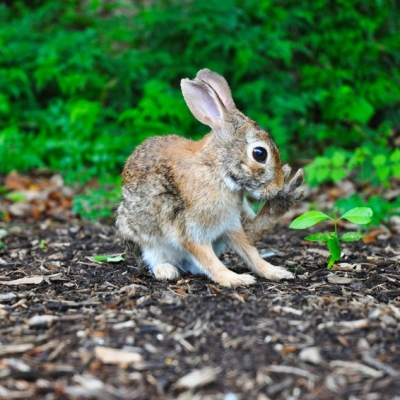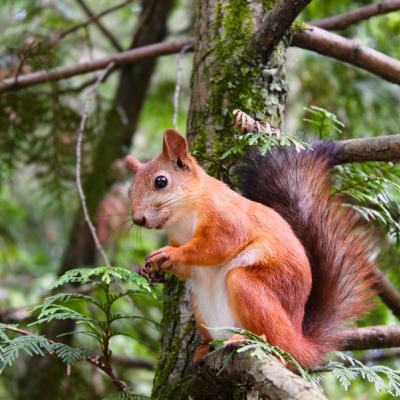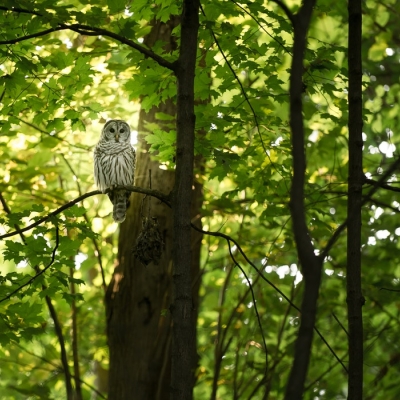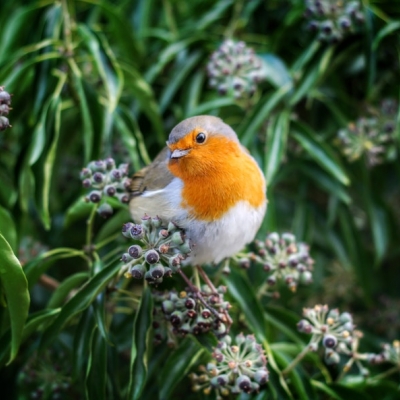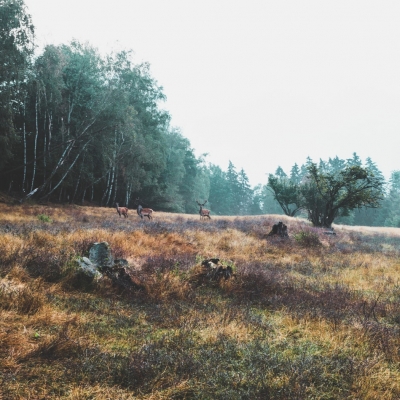
A saw chain is usually measured by pitch, gauge, and drive link (Part that sits in the groove of the guide bar/sprocket). The pitch is the space between each drive link, the gauge is the thickness of the drive link, and the number of drive links will usually tell you the length of the chain.
And I will note that chains are not standard. What that means is that an 18" chain for an Echo, will not fit a STIHL. I know Poulan has about 2-3 different kind of 20" chains and different brands utilize different chains also. You can have the same pitch and gauge, but if the number of drive links are different, then it will be either too long, or too short.
For smaller saws, it will usually have a 3/8" Picco pitch. (STIHL measurement), and a .43 or .50 gauge drive link.
Mediums saws usually have .325 pitch and .50/.63 gauge.
Bigger saws usually use 3/8" or .404 pitch. STIHL runs .63 gauge, unless Echo/Husqvarna/Poulan which are usually .50 gauge.
What this all means is simply put, you can't have a .325 pitch chain on a 3/8" sprocket, or will keep jumping off. Also the gauge needs to be correct, or else it will not even fit on the bar.
Most smaller to mid-size Poulans use 14"-18" bars, 3/8" P, .50 gauge. 14" would be 52 DL's, 16" would be 56 DL's, and 18" would be 62 DL's. You can any brand of chain, as long as those measurements match up.
How do you find this all out? Research. Invest time into learning wha you model needs. If you look on the side of the bar, usually closer to the bar mount, it will have some numbers engraved/stamped. That usually will point you in the right direction.
If not, you can remove your old chain and count the number of drive links, different companies have differnt links.
The reason the drive links look different is because different manufacturers design them differently. STIHL chain has a ramp to deliver oil into the chain, Oregon might have a ramp/groove, but I'm not sure.
This is all very important since safety is a concern. If you try and cobble together a saw from different parts from different manufacturers you will quickly see how bad of an idea it was. Much like Dr. Frankenstein you will understand why things are the way they are. In a best case scenerio the slop will quickly ruin both bar and chain.91 on the drive link would indicate 50 gauge but his is 90 chain(.043).
Understand you tools. Everytime you are using them it is a matter of life and death no matter how well prepared you are.
Minimize all risks as best you can or find somebody else that is more expeienced to opporate the chainsaw.

Deciduous Trees
Because of that, the angle of the sun rays changes throughout the year. The Earth is both revolving around the Sun and rotating in its own axis.
That means that in some portions of the year, the same geographical place receives different quantities and qualities of light.
With the changes in temperature and the amount of light received throughout the day, deciduous trees know that winter is coming.
They have evolved to respond to this by stopping the flow of nutrients and water to the leaves which causes them to wither and dry and fall to the ground. As the weather gets warmer more water becomes available for the tree, it can then resume growing leaves and obtaining nutrients again.
Without this protective cycle they would continue pouring nutrients and what limited water there is in the ground into the leaves which would cause them to freeze. It's a bit like how your blood flow pulls away from your fingers and toes, causing them to get cold faster than the rest of your body when exposed to cold weather.
The same thing happens here, but the process, while not alien has a slightly different execution.
Conifers (Needle Bearing Trees)

Conifers avoid having to lose their leaves by having their leaves grow hard and therefore aren't as easily affected by changes in temperature.
Color Changes
First, the leaves loose their green a the chlorophyll breaks down, then the yellow pigments, then the red ones. Only when there are no more pigmented cells left, can the leaf drops off and die.
A leaf is in many ways like your skin. And like your skin the leaves are shed once they are no longer needed in much the same way you shed dead skin cells.
Chlorophyll
Chlorophyll, the pigments that gives plants their distinctive green colour, is a molecule that absorbs sunlight and used that energy to make chemical reactions.
Chlorophyll works better at certain wavelenghts. Trees have a lot of different pigments (color compounds for absorbing light) in their leaves, just like humans do. These pigments absorb different colors of light, but they also decay at different rates when the leaves die. When fall rolls around, the reason you see all those nifty color changes is because the cells in the leaf, with the different pigments, start to break down as we've learned.
But there is another effect that we should look at.
Other effect of differential radiation (quality of the light) is that the places with less sunlight become colder.
Even though leaves can work in cold environments, the payout is minor (compared to a warmer environment), thus, the plant "decides" to turn off the photosynthetic system, move all its resources to storage and wait for everything to be better.

Alright, I love being on the water. Kayaking was always a personal goal of mine, but I will be honest when I say, that part of it was the desire to go fishing. Kayak fishing seemed like a great way to get out and go to the fish. Actually find where they ere as apposed to sitting on the shore.
Well, as it turns out, it is harder than it looks.
So I actually invested in a fish finder to help in my search.
I use a Hummingbird. I know Hummingbird makes better models, but this was was relatively inexpensive, at $150, you can find them for a few dollars cheaper. I assume the more expensive models are better since this one can be a hassle sometimes. I have noticed that it doesn't work well until about 8 ft of water, which has been confirmed to me by other fishers.

Since I hadn't used a fish finder before I want to keep things affordable. That and I don't have the money for expensive equipment. Color, DSI, and GPS are all nice additions that will each add about $100 to the price.
Newer models with CHIRP are an advanced form of color and add about $200 to the price. Side scan also adds about $200 to the price as well. They get more advanced from there with multiple transducers and GPS positioning receivers, 10" screens, and huge batteries to power it on the kayak. This is all fine and good, but not for me, it's only going to help an extremely sophisticated angler that wants to mark very subtle structure and be able to return to it.
Most of the time people will be happy with a cheap unit that gives depth and basic subsurface structure. It is more important knowing the depth that surface structure anyway. You may be 50 ft from shore, but knowing if you're in 5 ft of water or 20 ft of water can make a big difference in your lure selection and retrieve.
And for that Humminbird and Lowrance are both sure bets for inexpensive units. I want something that I can use to say that looks like a place a fish might want to be rather than messing around with settings trying to find suspended fish and what have you.

I have people ask me from time to time what is a good way to get closer to nature. Two words: bird watching.
It is easier than you think. As easy as putting a bird feeder in your own yard or window. Also a bird bath -- you don't need to spend a lot of money, any shallow pan filled with water will work as long as it isn't any deeper than 2 inches.
For more advanced outing you can stay local. Whether you're urban or rural there'll be so much more birdlife close by than you think. Get a field guide to your country and a pair of binoculars that suits your budget and then get out there. Watch out for habits of common birds as well as just trying to tick them off a list. Some of the best bird watching can be watching a new behaviour of a species you've seen a thousand times before.
Contact your local nature center or Parks dept. and ask them if they have birding walks in your local parks. Often, especially during migration season, local bird experts will host birding walks in birding "hot spots" in your area. These are usually free and open to the public. Contact your state's ornithological society and find out if they are hosting bird walks in your area. They will either be volunteers or experts - both happy to help. This is the best way to learn about birds. And it is fun to walk with someone who can teach you about what you are seeing and hearing.

Identifying Birds
If at all possible, you should invest in a pair of binoculars. You don't need expensive ones to start, but out in the field so many birds will be too far away to see clearly without binoculars. I keep my binoculars and a bird book next to the window.
That's why back yard birding is fun, watching birds at your feeders--you don't need binoculars!
I also use the Merlin bird ID app to identify birds, in addition to the book. So much fun of birding is learning bird songs. What I like to do is record unfamiliar bird songs on my phone, then try to match the bird song.
- Where did you see the bird? Habitat:
- Forest
- Shoreline
- Open field
- What was the bird doing? Behavior:
- Soaring overhead
- Hopping around the treetops
- Scratching around the ground
- Size & Shape?
- Get started by using comparisons to birds you know to fit it into size ranges.
- Markings (Note all markings that stand out, like stripes or bright colored areas or spots?
- Predominant color
- Secondary colors

Good boots are what makes being out in nature comfortable. Well, they are one of the things, but they are also the big thing.
Shoes with a Gore-Tex barrier are truly waterproof. Shoes with XCR (Extended Comfort Range, another Gore-Tex product) are merely water-resistant. But my shoes with XCR have never let water in, even while quickly crossing shallow streams. Waterpoof boots don't breath as well as non-waterpoof boots so your socks may have just been wet from sweat, and there's a huge hole on the top of ever single shoe where water can get in.
I've been using Vasques for 10 years now, highly recommended them since they are great boots. As are nubuk leather boots with a rubber seam above the sole and and a gore-tex liner.
The thing to remember about any shoe that is supposed to keep water out is maintanace. Reproofing boots, like with jackets, is really important to keeping the performance up. 3 years of heavy use is the best you can hope for from a pair of boots even with regualr care.

ECHOs are fine saws and Huskys are on par with STIHL but the truth is you are never going to see a 20-30 year old ECHO sell for the same STIHLs do. My local STIHL dealer sells 90s era mid range pro saws for more than a new ECHO.
STIHL is number one in chainsaws in my opinion, but there are some good Echo & Husqvarna saws out there and in most circumstances they hold their own. You should never compare a Stihl to an ECHO. Echo makes some great saws, but the comparision is like saying a Honda is the same as a BMW, the scale is way off.
A lot of people look at a STIHL and see the price first and don't even consider the quality. Then they see that they only give you a 1 year consumer warranty, factory defect only. ECHO offers a 5 year consumer warranty, also factory defect only. However, you can purchase a 6-pack of the STIHL ultra synthetic oil blend to extend it to 2 years.
But those are just numbers and a saw that is used day in day out is going to have problems. But, you can limit them. Make sure that you do not run it with a dull chain since this will kill any saw. Don't overheat it (limb it). And no matter what you do, always make sure that you use good quality fuel and keep up on maintenance.
Fuel is a biggy. And that is why the warranty (anywarranty) does not cover fuel related issues.
No matter what saw you choose it is important to invest in proper safety gear. Make sure you read the manuals, and watch and talk with the pros that you can find before you get to work. It can be exciting to get started, but you're never fully prepared.









